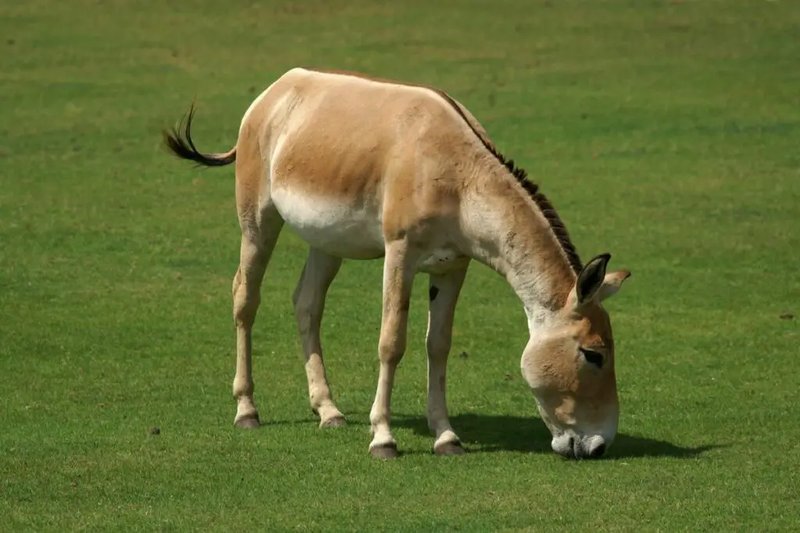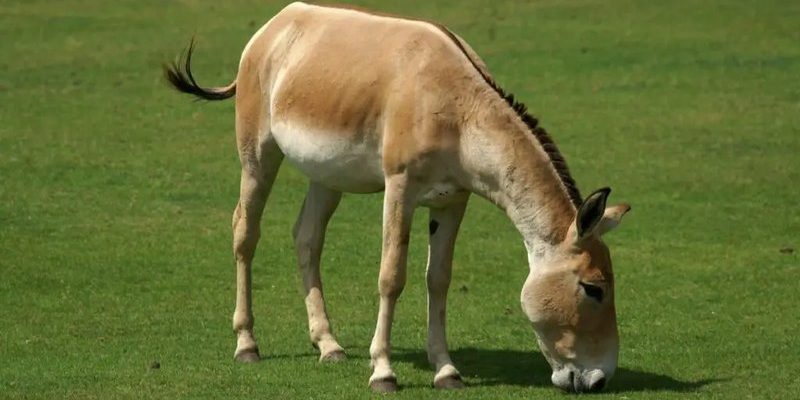
Much like how you might have friends who look a little bit alike but have their unique qualities, several animals share features with horses but are still quite distinct. Some are wild, some are domesticated, and each has its own story. So, grab your coffee, settle in, and let’s explore ten animals that are similar to horses and learn how to tell them apart!
1. Donkeys
Donkeys are probably the first animals that come to mind when thinking about horse-like creatures. They have a similar body shape, but their features tell a different story. Donkeys are usually shorter and stockier than horses, sporting large ears that are often much bigger in proportion to their heads.
Here’s the thing: while both animals belong to the Equidae family, donkeys are known for their distinct braying sound and their often stubbier legs. They are also more forgiving in challenging terrains, making them great pack animals in rugged landscapes. In terms of color, donkeys often have grey or brown coats, with some sporting unique markings like a cross on their back.
2. Zebras
Zebras might seem like horses in fancy pajamas. With their striking black and white stripes, they’ve got a unique look that sets them apart. Zebras are wild animals and belong to the same family as horses, but their personalities are quite different.
If you see a horse and a zebra side by side, you’ll notice that zebras are generally smaller and have a more upright mane. What’s fascinating is that their stripes are like fingerprints—each zebra’s pattern is unique! They can be social animals, often found in groups called herds. This social structure is different from horses that can sometimes be more independent.
3. Mules
Mules are a fascinating hybrid animal, a cross between a male donkey and a female horse. This means they inherit traits from both parents, which makes them quite unique. Generally, mules tend to have the body of a horse but the ears of a donkey, making them easy to identify.
Mules are known for their strength and endurance, often better suited for heavy work than horses. They tend to be more resilient to harsh conditions, which is why you might find them in mountainous regions. Plus, they can also have some pretty quirky personalities, often showcasing a mix of the stubbornness of donkeys and the intelligence of horses.
4. Ponies
Don’t be fooled by the term “pony”—they’re not just small horses. Ponies are a distinct category with their own breed traits, typically standing under 14.2 hands tall (that’s just a fancy way of saying how tall they are).
Ponies often have a stockier build, with shorter legs and thicker manes. Their temperament tends to be more playful and sometimes a little mischievous, which is part of their charm. You’ll often see ponies used in children’s riding lessons due to their smaller size and generally gentler nature compared to full-sized horses.
5. Camels
Have you ever considered camels as a horse cousin? While they might not immediately come to mind, camels share the same family tree. They are adapted to desert environments, which gives them a very different look and purpose.
Camels are typically much larger than horses and are known for their distinctive humps. These humps store fat, which makes them adept at going without food and water for extended periods. If you watch them walk, you’ll notice a unique swaying motion, unlike the more graceful stride of a horse.
6. Tapirs
Tapirs might not be the first animal you think of when considering horsey relatives, but they belong to the same order (Perissodactyla). These forest-dwellers are stocky and have a nose that’s a bit like a miniature trunk, lending them a unique silhouette.
Tapirs are herbivores and tend to be quite shy, preferring to stay hidden in the underbrush. They don’t have the same build as horses, but their rounded bodies and thick legs can remind you a bit of a horse’s sturdiness, especially from a distance.
7. Rhinoceroses
Rhinoceroses, or rhinos for short, are another interesting cousin of the horse. They’re much heavier and bulkier, but they share a similar hoofed structure. Rhinos have thick skin that acts like armor and, like horses, they are herbivores.
While horses may gallop gracefully, rhinos tend to lumber. Still, they can run surprisingly fast when threatened. Their horns, made of keratin (the same material as our hair and nails), add to their distinct look, making them one of the most recognizable animals in the wild.
8. Okapis
Okapis are probably one of the lesser-known relatives, and they might even look a bit like a mix between a horse and a zebra. They have a horse-like body but with zebra-like stripes on their legs. This unique look helps them camouflage in their native rainforest habitat.
These animals are shy and solitary, much like tapirs. Okapis are fascinating because they were only discovered by the Western world in the early 20th century. They’re a great example of how diverse the Equidae family can be.
9. Przewalski’s Horse
Let’s bring it back to horses for a moment. Przewalski’s horse is the only true wild horse that still exists today. Unlike domestic horses, they are smaller and have a stockier build with a thick neck and a unique mane that stands upright.
What’s interesting about them is that they have never been domesticated, giving them a different set of instincts and behaviors. Przewalski’s horse is a symbol of conservation, as it was saved from extinction thanks to dedicated breeding programs.
10. Wild Asses
Lastly, let’s talk about wild asses, which include species like the Somali wild ass and the Asiatic wild ass. These animals share the same family as horses and donkeys and are often smaller and more slender.
Unlike domestic donkeys, wild asses are adapted to living in arid environments and are known for their speed and agility. They have short, erect manes and a unique coloration that often includes a stripe down their back, making them distinct from both horses and donkeys.
So, there you have it—ten amazing animals that share similarities with horses but stand out in their own unique ways. From donkeys and zebras to the rare Przewalski’s horse, each has its own special traits that make it fascinating. Next time you see a horse, take a moment to appreciate its relatives, whether they trot alongside it or roam in distant lands. Animals are remarkable, and their diversity reminds us just how unique our world can be!

